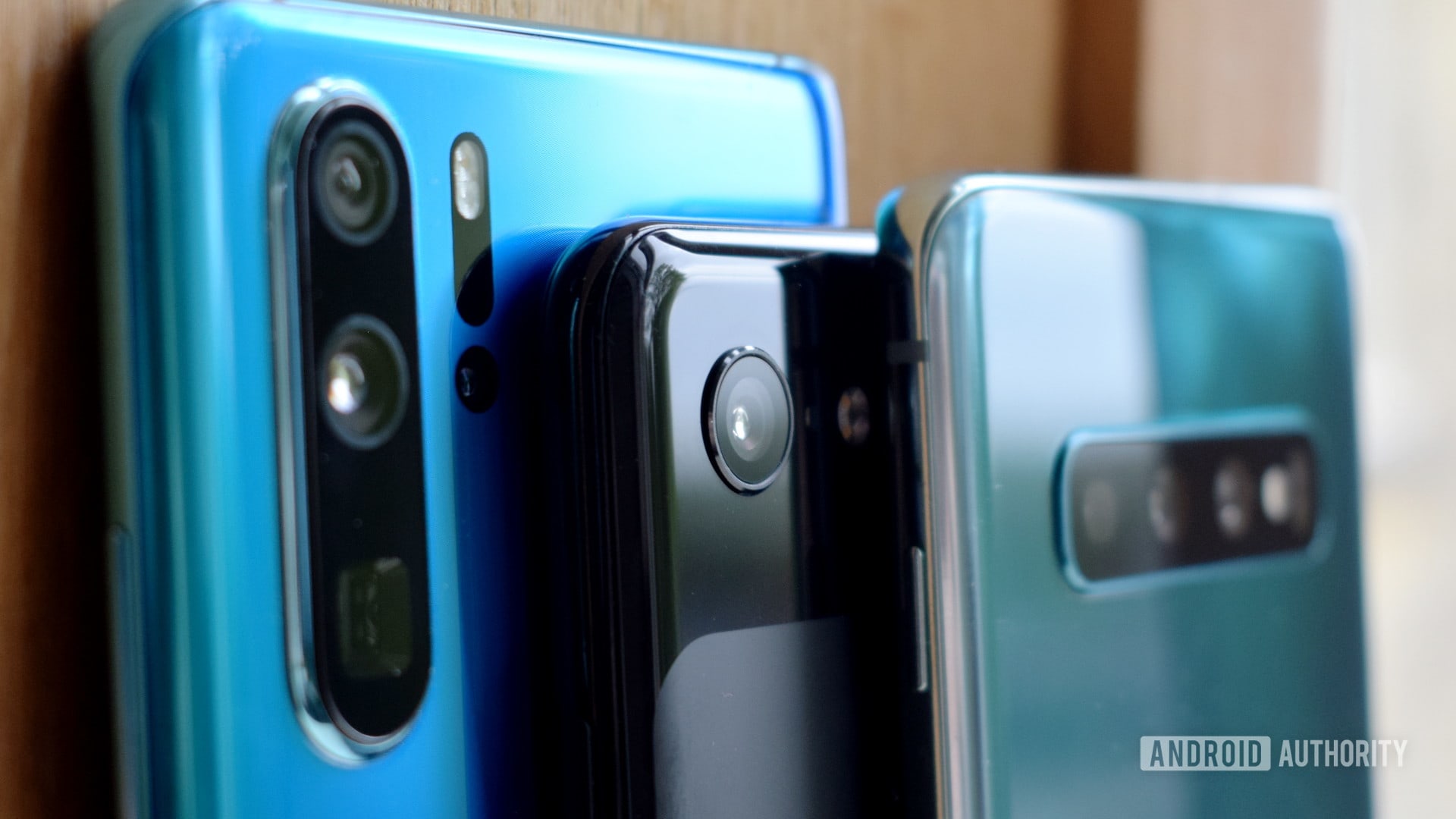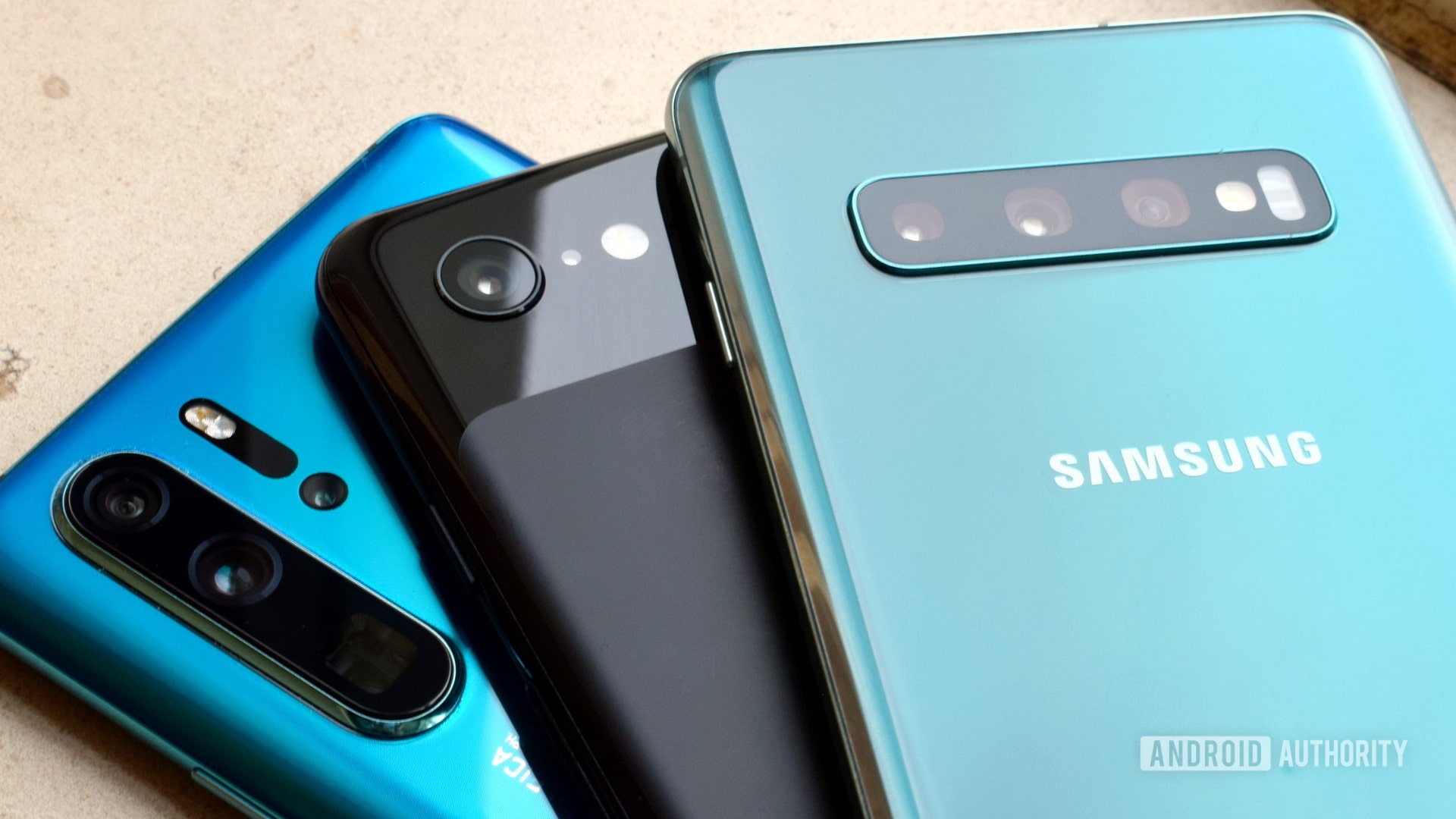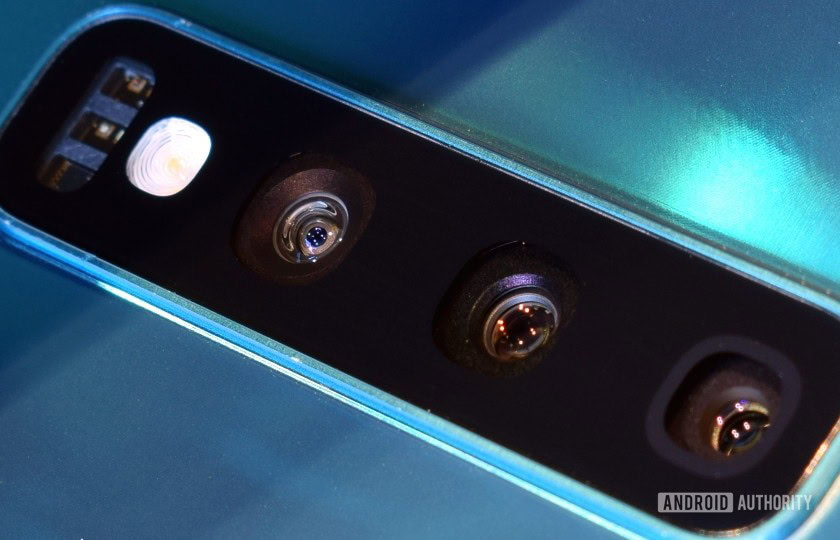Affiliate links on Android Authority may earn us a commission. Learn more.
2019 photography showdown: HUAWEI P30 Pro vs Samsung Galaxy S10 vs Google Pixel 3
May 5, 2019

It’s tough to go wrong with a flagship smartphone camera these days, but if you’re after the crème de la crème, just a handful of names stand out. The Google Pixel 3 and its machine learning-enhanced camera continues to be the tech enthusiasts goto handset for consistently great pictures. Likewise, recent HUAWEI handsets have built a solid photography reputation for the company, The new P30 Pro takes low light and zoom capabilities another step further. Samsung also scores consistently well in all photography tests and the Galaxy S10 remains a great shout if you love taking pictures.
But which one is the best? That’s what we’re here to find out with today’s comprehensive shootout. We’re going to look at everything from landscape and macro shots, to HDR, low light, and zoom capabilities. Images have been compressed and cropped in the article for the sake of bandwidth, but you can find uncompressed images in this Google Drive folder. I hope your bandwidth is ready for all these pictures.
Detail, exposure, and color
This first picture gives a good overview of how these cameras handle a scene with a range of details and colors. At 10MP, 12MP, and 12MP respectively and minimal noise in this scene, all three cameras offer a very similar level of detail. None of them present any major issues with post-processing, such as oversharpening, or exposure either.
The biggest difference here is color saturation and white balance. The HUAWEI P30 Pro takes on a slightly warmer tint with more natural, subdued colors on this overcast day. The Pixel 3 has a more neutral white balance but boosts colors such that the clouds take on a blue hue. Nice looking but not strictly true to the scene. The Samsung Galaxy S10 offers a similar white balance and a small boost to color that’s closest to how the scene actually looks.
Roles reverse in this second snap. Here the HUAWEI P30 Pro has the better color and white balance accuracy. Although it verges on overexposing the window. The Galaxy S10 attempts to make the colors pop a little too much, erasing subtle highlights and details from the post box and over-pinkening the brickwork. Meanwhile, the Pixel 3 is a tad darker than its rivals, reducing the pop of the shadow.
This indoor flower example highlights this trend further. The P30 Pro is notably more exposed, compensating for darkness on the left by blowing out the light on the right. The result is a slightly over brightened subject. The Pixel 3 is the polar opposite, darkening the flowers too much in an attempt to keep the highlights in check. The Galaxy S10 wins in terms of exposure and color vibrancy. The flowers are perfectly exposed and the phone’s auto-HDR effect (which doesn’t seem to switch off regardless of the toggle) balances out the dark and bright backgrounds perfectly. You can even see the blue of the sky.
Let’s return the focus to colors for a moment. Again the P30 Pro is subtly warmer than the other two. I quite like the look, but it’s not entirely accurate. The Pixel 3 ramps up the colors, particularly the yellows, and darkens the blacks a little too far. It pops, but isn’t very accurate. The Galaxy S10 again clocks in the more balanced color presentation.
As expected, all three of these cameras produce excellent pictures in good lighting.
This last general comparison shows off the wide-angle lenses on the HUAWEI P30 Pro and Samsung Galaxy S10. The Pixel 3 lacks this shooting option. The S10 has a wider lens to fit more in the scene and again its colors pop more than the P30. However, the P30 boosts the highlights to produce a more textured look on the grass and trees. Both are pretty good but suffer from a lack of detail and blurring at the edges of the lens.
Generally speaking, the HUAWEI P30 Pro produces a warmer white balance and more subdued colors. The handset also prefers a slightly brighter exposure than its rivals. The Pixel 3 is almost the opposite, often producing darker looking pictures with a lot more color saturation. The Samsung Galaxy S10 is somewhere in between, although occasionally boosts colors even more than the Pixel 3.
All three are clearly very capable shooters, but there are key differences between their main sensors and image processing algorithms.
High Dynamic Range
High Dynamic Range (HDR) photography is a helpful tool for balancing exposure in tough shooting environments. These often include scenes with a bright light source behind the subject or low light scenes with a single light source. Good HDR improves over and underexposure when compared to regular photographs.
This shot below might not look tricky because all the results are surprisingly good. But without HDR on, the foreground cactus looks completely black or the window becomes blown out.
The HUAWEI P30 Pro provides a good all-round HDR look. The background overexposure is kept to a minimum, while the foreground is lit up enough to ensure that all the small details are discernable. Galaxy S10 is even better in this regard, further reducing the overexposure in the clouds while maintaining foreground balance.
The Pixel 3 is a little different. The background is more overexposed than its competitors and the foreground a little darker. However, the phone has done a better job than the other two at enhancing the details and lighting between the cactus spines and the body. The color of the plant pot is also more pronounced. Perhaps the best way to describe this is that the Pixel 3’s HDR is more subject-focused, while the other two are frame focused. Unfortunately, the Pixel 3 takes longer to snap HDR shots than its rivals.
Low-light performance
Low-light performance and HDR often go hand in hand, as is the case when shooting in low light with the Google Pixel 3. The phone takes a few seconds to gather multiple exposures and stitch them together for a brighter, less noisy picture. Although as you can see in the example below, the result is still rather noisy, a little dark, and color saturation is dialed up a notch too far.
The Samsung Galaxy S10 produces a similarly passable result, but there are clear issues. The image is still a little noisy, the phone struggles to focus in the dark, and the colors are a little washed out. The obvious winner in this example is the HUAWEI P30 Pro. The enhanced low-light capabilities of its new SuperSpectrum sensor produces results that are low in noise and offer well-balanced colors and dynamic range. The focus is also spot-on, likely thanks to the time-of-flight sensor.
In this next example, we turn the lights off and switch to the phones’ various Night Mode options. Put bluntly, the Samsung Galaxy S10’s night mode is not in the same league as the technology offered by HUAWEI and Google. It’s overly noisy and focusing took too many retries to count. Samsung’s implementation is fine in better lighting conditions, but it can’t handle ultra-dark environments as well as its competitors.
The Galaxy S10's low light capabilities fall well short of other flagships.
The Google Pixel 3 does a phenomenal job by comparison, capturing plenty of detail and color. If there’s one drawback it’s that the result is still too dark and noisy in the shadows. Furthermore, the white balance is a bit too cool.
There isn’t a huge amount of difference between toggling Night mode on and off with the P30 Pro, that’s just how good the new sensor is in ultra-low light. Although using it captures a bit more light and reduces the red tint to the color balance. Huawei’s Night mode captures even more light than Google’s, resulting in very low noise. However, detail capture isn’t perfect and the image is a tad little too yellow. You can fix this in post-processing for a great result, but it’s a shame HUAWEI can’t get this right out of the box.
Zooming in
With a 5x telescopic lens dedicated to zooming, the specs heavily suggest that the HUAWEI P30 Pro is going to come out on top in any zoom test. However, the Samsung Galaxy S10 offers a 2x telephoto lens and Google touts its own Super Res Zoom technology too. So let’s find out just what level of decent zoom quality is achievable on each handset.
Our first example is a picture of text in a book taken in so-so lighting conditions. At 2x, the HUAWEI P30 Pro’s Hybrid Zoom technology makes out the text well enough but produces a somewhat soft result. By contrast, the Pixel 3’s zoom algorithm dials up the sharpening filter, which introduces artifacts in the book edge. The text is legible, but the image isn’t pretty. The Samsung Galaxy S10 provides by far the greatest clarity and sharpness at 2x. There’s a little bit of noise in the darker areas, but it’s hands-down the winner.
The Pixel 3 begins to deteriorate at a 3x zoom. White balance has shifted well into the reds in the above example and the denoise and sharpening algorithms produce a muddy painted look. Overall, detail capture is very poor even in great light. The Galaxy S10 and P30 Pro are vastly superior and a tough to tell apart. The P30 Pro pulls slightly ahead on texture detail, as seen in the wood around the window and the branches on the roof. This is due to the phone pulling data from its 5x zoom camera and stitching that together with the main sensor’s Hybrid Zoom.
The HUAWEI P30 Pro pulls far ahead at 5x, where the periscope camera kicks in. Details, white balance, and exposure are all exceptional. The Galaxy S10 holds up OK at 5X, although we can clearly see blurring and lack of details at this long range. I don’t even think I need to mention the Google Pixel 3’s capabilities at 5x. They’re simply non-existent.
In summary, the Galaxy S10 is best when zooming to just 2x. Beyond 2x, the HUAWEI P30 Pro is the clear winner and it’s lead greatly increases as you up the zoom factor. I should also mention that the P30 Pro’s 40MP main camera produces better results than its 10MP zoom at 2x. It’s often worth shooting in this mode if you intend to crop in.
The Galaxy S10 offers a decent zoom, but HUAWEI's 5x periscope camera takes the crown.
Bokeh blur (portrait mode)
Bokeh blur, or portrait mode, has become a staple of the smartphone photography experience. These three handsets offer unique ways to calculate the necessary depth map and edge information to add in software bokeh. The HUAWEI P30 Pro offers a dedicated time-of-flight (TOF) sensor that physically measures distance using infrared light. Meanwhile, Google relies on a combination of multiple-image, object/face detection, and sharpness to gather data from normal photos.
With solid objects, all three cameras do a pretty decent job at detecting edges. The quality of the blur is nice on all the handsets too. Although Google’s is perhaps overly strong and dramatic, with a very sharp cutoff between the foreground and background. This produces some harsh edges and a few errors along the wooden table edge and at the back of the skull.
The P30 Pro and Galaxy S10 do a better job at gradually blending in and out of focus, as we can see small amounts of bokeh creep in at the foreground edges. Their results are certainly more realistic. However, both do seem to encounter an error at the top of the skull.
Edge detection errors are more pronounced in this second shot due to the transparent glass. This type of issue persists with hair in portraits too. Note that the HUAWEI P30 Pro blurs the foreground on the upper left side of the bulb. Likewise, the Pixel 3 struggles near the top of the bulb and we can see sharp edges along the sides as well. The Galaxy S10 is excellent around the bulb but seems to have confused the background picture frame with the foreground. Sadly, all three cameras have clear detection issues, although you often have to pixel peep to find them.
Despite Google’s good level of detection, you can’t go back and change the focal point or adjust the amount of blur once you’ve hit the shutter. Both HUAWEI and Samsung allow for this, and also offer a range of additional effects. HUAWEI’s bokeh is the most pleasing to look at, as its strength realistically increases further into the background. The P30 Pro’s ToF sensor also detects edges much more consistently and at greater shooting distance than the Pixel 3 and Galaxy S10.

The verdict
Clearly, all three of these flagship smartphones are very capable shooters. I don’t have any major qualms about the image quality provided by any of these smartphones, although each still has its own distinct set of pros and cons.
The Google Pixel 3 aims for consistency and simplicity. Quickly point and shoot and you’re guaranteed a decent, if not always excellent picture virtually every time in nearly any shooting environment. There’s minimal messing about with settings and lens toggles, and if you need a small zoom, bokeh, or to shoot in low light, the Pixel 3 can handle it. The trade-off is a lack of flexibility compared to its multi-camera rivals.
The Samsung Galaxy S10 is more capable in terms of zoom and wide-angle shots than the Pixel 3, yet still clearly offers a phone-optimized camera experience. The handset also has probably the best HDR implementation out of any phone I’ve used so far. Color saturation can sometimes be overdone, but this isn’t a bad thing if the picture’s destination is social media. The phone’s tradeoff is that the S10’s low light capabilities are notably behind the curve.
Pick the Pixel 3 for consistency, the P30 Pro for flexibility, or the S10 for something in between.


This leaves us with the HUAWEI P30 Pro – by far the most flexible shooter out of the three. It offers superior zoom, low light, wide-angle, bokeh, and even a high-resolution shooting option that we haven’t touched on here. Better still, the oversharpening and heavy post-processing from last year’s P20 Pro is a thing of the past. The only drawback is that its white balance regularly shifts too warm and it can tend towards overexposure in well-lit scenes. But this isn’t a problem if you plan to edit most of your pictures.
In summary, pick the Google Pixel 3 if you’re after a consistent, simple smartphone camera. The Galaxy S10 is excellent if you want a bit more flexibility without an overload of options. Finally, the HUAWEI P30 Pro is simply fantastic if you’re an adventurous photographer happy to line-up the perfect shot and make the odd crop or adjustment in post.
Thank you for being part of our community. Read our Comment Policy before posting.